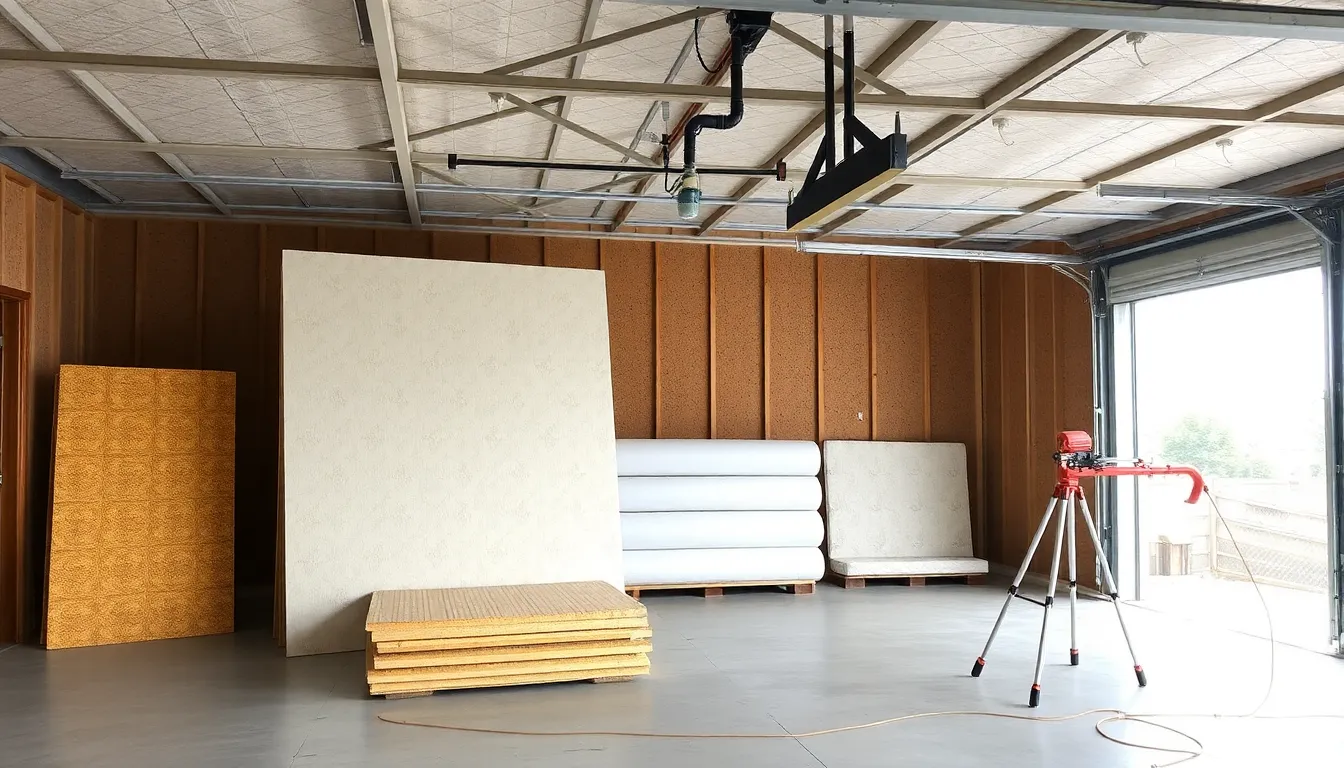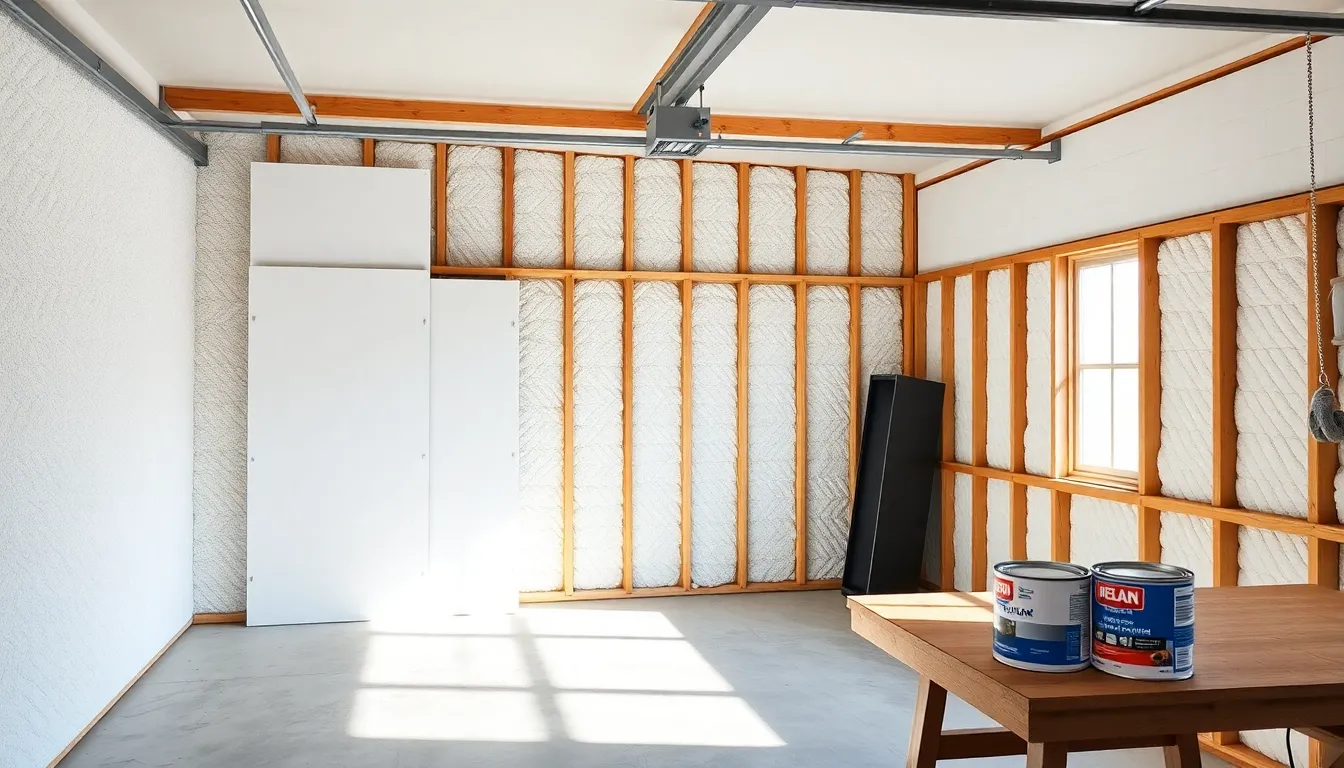When it comes to home improvement, the insulated garage might not be the first thing that pops into mind. But think about it: a cozy garage can be a game-changer, transforming that cold, dreary space into a comfy haven. No more shivering while you rummage for tools or dodging icicles as you pull out the lawnmower. With proper insulation, he’ll not only keep the chill at bay but also save on energy bills.
Imagine a garage that’s not just a place to park the car but a versatile space for hobbies, workouts, or even a mini-man cave. It’s time to stop treating the garage like a neglected storage unit and start embracing its full potential. So let’s dive into why an insulated garage is the unsung hero of home improvement, ready to elevate that forgotten space into something truly spectacular.
Benefits Of An Insulated Garage
An insulated garage offers significant advantages for homeowners. Boosting comfort and energy savings showcases its importance in home design.
Energy Efficiency
Energy efficiency improves substantially with insulation. An insulated garage minimizes heat loss during winter months and keeps cool air inside during summer. Homeowners often notice reduced energy bills as a result. Insulation adds a layer of protection against external temperatures, limiting the need for heating and cooling systems. A well-insulated garage can save approximately 20% on energy costs compared to an uninsulated space. It provides an excellent return on investment through reduced energy expenses.
Temperature Control
Temperature control becomes more manageable in an insulated garage. Maintaining consistent indoor temperatures prevents extreme fluctuations, creating a comfortable environment. Activities in the garage, such as woodworking or exercising, hinge on stable temperatures year-round. Insulation helps prevent moisture buildup, which protects equipment and stored items. Homeowners appreciate the comfort of an insulated space that remains usable, even in the harshest weather conditions. Improved air quality and reduced drafts enhance the overall experience.
Types Of Insulation


Various insulation types offer distinct benefits for garage applications. Understanding these options helps in selecting the right insulation for enhanced comfort and efficiency.
Foam Board Insulation
Foam board insulation consists of rigid panels made from polystyrene or polyurethane. This type provides excellent thermal resistance, making it effective for garage insulation. It becomes easy to install on walls and ceilings. Homeowners appreciate its moisture resistance, reducing the risk of mold growth. Manufacturers often provide foam board in various thicknesses, allowing users to select the ideal R-value based on their garage’s climate.
Fiberglass Batts
Fiberglass batts feature a blanket-like form that fits between wall studs and ceiling joists. This insulation type is budget-friendly, widely available, and simple to install. Its non-combustible nature enhances safety within the garage. Fiberglass batts come in various widths and R-values, accommodating different garage sizes and needs. It efficiently traps air pockets, minimizing heat transfer and contributing to improved energy efficiency.
Spray Foam Insulation
Spray foam insulation expands upon application, filling gaps and providing a seamless barrier against air and moisture. This type offers superior insulation performance and energy savings compared to traditional options. Homeowners value its ability to reach difficult areas, ensuring comprehensive coverage. The closed-cell variant adds structural stability, enhancing garage walls. Spray foam insulation often creates an air-tight seal, improving indoor air quality and comfort levels.
Installation Process
The installation of insulation in a garage significantly enhances comfort and energy efficiency. A well-planned approach ensures optimal results.
Preparing The Garage
Start by clearing out the garage. Remove any items that obstruct access to walls, ceilings, and floors. Next, repair any damage to walls or ceilings. Address cracks or holes before proceeding. Seal openings with caulk or foam to prevent air leaks. This preparation maximizes the effectiveness of the insulation. Assess the current state of electrical outlets or lighting fixtures, ensuring they align with the insulation installation process. Lastly, choose an appropriate safety gear for protection during installation.
Insulation Methods
Three primary insulation methods suit garages well. Foam board insulation creates a strong thermal barrier. It’s lightweight and easy to cut, allowing for quick installation. Fiberglass batts offer affordability and decent thermal performance. Homeowners can install them between wall studs with minimal effort. Spray foam insulation, while more expensive, provides superior air sealing. It expands to fill gaps, ensuring no air escapes. Evaluating the advantages of each method helps homeowners decide based on their budget and insulation needs.
Final Touches
Inspect the installation after applying insulation. Ensure every area is covered adequately. Homeowners might want to add a vapor barrier, especially in moist climates, to prevent moisture problems. Cover exposed insulation with drywall or plywood for safety and aesthetic appeal. This step enhances durability and ensures a polished look. Finally, check the garage door for insulation, as this is crucial for energy savings. Sealing any remaining air leaks completes the installation process and maximizes the benefits of the insulated garage.
Maintenance Tips
Maintaining an insulated garage ensures long-term performance and efficiency. Regular check-ups and moisture management are key aspects to consider.
Regular Inspections
Homeowners should conduct routine inspections at least twice a year. Checking insulation for signs of wear or damage provides an opportunity to address issues early. Look for gaps, holes, or loose materials that may allow air leaks. It’s also important to inspect doors and windows for any drafts. Inspecting the garage for pests can identify potential problems before they escalate. Making these inspections a part of regular maintenance helps maintain energy efficiency.
Avoiding Moisture Accumulation
Managing moisture is critical for maintaining an insulated garage. Ensure proper ventilation by installing vents or exhaust fans to facilitate airflow. Investing in a dehumidifier can effectively reduce humidity levels, preventing mold and mildew. Sealing any cracks in walls or floors stops water from seeping in. Consider using a vapor barrier on the ground to prevent moisture issues. Keeping everything dry not only protects the insulation but also enhances the overall air quality. Regular monitoring and proactive measures improve longevity and comfort in the space.
Conclusion
Transforming a garage into a comfortable and functional space is within reach through insulation. By investing in this home improvement project, homeowners can enjoy significant energy savings and a versatile area for various activities.
With options like foam board, fiberglass batts, and spray foam insulation, selecting the right material becomes a crucial step toward achieving optimal performance. Proper installation and regular maintenance ensure that the insulated garage remains a valuable asset, enhancing air quality and overall comfort.
Ultimately, recognizing the potential of an insulated garage can lead to a more enjoyable living environment while maximizing energy efficiency.


